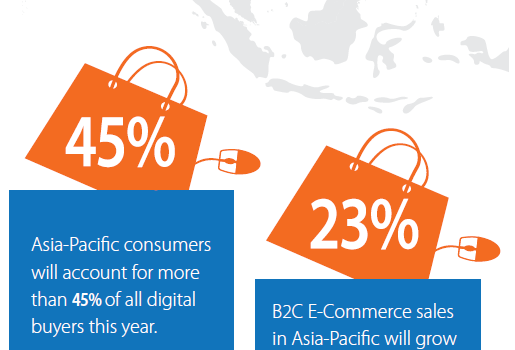The Growth of the Global E-commerce Market
Online shopping has become, arguably, the most popular activity on the internet today. There, probably, was no time more exciting for the e-commerce business than now, when anyone (literally) can make an e-commerce site and sell their wares to a global audience. And people across the world can get absolutely anything from the internet from the cozy confines of their homes.
A look back in time
eCommerce has come a long way from being a process of execution of electronic commercial transactions which gave users a way to exchange business information and pay online through Electronic Funds Transfer (EFT). eCommerce, as we know it, became possible in the early 1990s when the internet was opened for commercial use and with the development of security protocols and DSL which allowed for a rapid and persistent access to the internet.
Although the dot-com collapse of 2000 sounded the death knell for many fledgling e-commerce companies, it allowed reputed and established brick-and-mortar businesses to offer online shopping options, paving the way for a more robust e-commerce market. From 2001, e-commerce started to grow slowly and by the end of 2007, e-commerce sales were close to 3.5 % of total sales.
And then there were Amazon and eBay, whose pioneering efforts have made it possible for us to witness the burgeoning e-commerce sector that has made buying and selling easy. Established in 1994 and 1995, respectively, Amazon and eBay have changed the way e-commerce is done and have set benchmarks for others to follow.
The Asian perspective
During the 90s, consumers from Asia were beginning to get attracted towards western e-commerce sites and were experimenting with them. On the economy front, things were going well when the financial crisis of 1997 struck. Add to it the dot-com bubble burst and consumer mistrust increased. It took almost a decade to build consumer trust and again, companies like Amazon played a major role in doing that.
Other challenges included low internet penetration and problems in online payment since the number of people with debit or credit cards was relatively low. This problem was solved with the introduction of the cash-on-delivery model which has also helped in gaining the trust of the customer. It was not until 2011 that Asian e-commerce really flourished.
Current trends in Asia
In 2012, e-commerce sales broke the $1 trillion mark and in the next two years the Asia-Pacific region outspent their North American counterparts by close to $40 billion. Buyers of this region account for 45% of all online buyers in the world. The market in the region is currently led by countries like China, India, and Indonesia with help from other southeast Asian countries as well.
An Asian e-commerce company (Taobao, China) is the second largest in the world, ahead of eBay speaks volumes of the rise of Asian dominance in the field of e-commerce. The global Top Ten comprises of six Asian e-commerce companies – Tmall (4th), Alibaba (5th) Flipkart (6th), Snapdeal (8th), Jabong (10th).
India – The land of e-commerce opportunities
In a 1.25 billion people strong country, where the internet penetration is only 34.8%, or about 462 million people (2016), it is easy to see the opportunities. Take a look at some astounding stats, which are bound to increase exponentially with better infrastructure.
- 40 million consumers purchased something online in 2014
- This number increased to around 65 million in 2015.
- The Indian e-commerce industry is likely to cross the $38 billion by end of 2016.
- Indian e-commerce is set to generate 250,000 jobs in 2016.
Trends in 2016
Indian e-commerce saw a shift to mobile with e-commerce apps gaining in popularity and some players opting to shut down their websites and allow users to shop only from apps. With 75 million mobile transacting users, e-commerce biggies are competing to outdo each other to provide the best smartphone experience to their customers.
Flipkart, Snapdeal, Amazon India, eBay.in, Paytm and ShopClues are currently the top six e-commerce players in India who, between them, drive more than 85% of sales. Now that they have consolidated their positions, they are looking to go after profits and sustainable growth.
eCommerce companies are looking to tap the huge rural market by customizing the offerings and experience. They are also adding more and more products to their list of offerings and, according to Mr. Vijay Shekhar Sharma (Founder of Paytm) might “also deliver milk and water,” thereby signaling the end of the neighborhood store.
The “Aur Dikhao” campaign of Amazon touched upon a fundamental Indian mentality of having limitless options before we choose. To choose the best offering at the best prices across different e-commerce sites, people are turning towards price comparison services like Idealo. Such services use a combination of screen scraping retailer’s websites and CSV files that are supplied by the retailers themselves to create a database.
Takeaway
There couldn’t have been a better time for the Indian e-commerce industry. A young, urbane demographic with enough disposable income ready to make their lives easier by online shopping is driving the markets to unprecedented levels. Better connectivity and infrastructure and better offerings from competing players in the e-commerce sector herald even better times ahead.
















